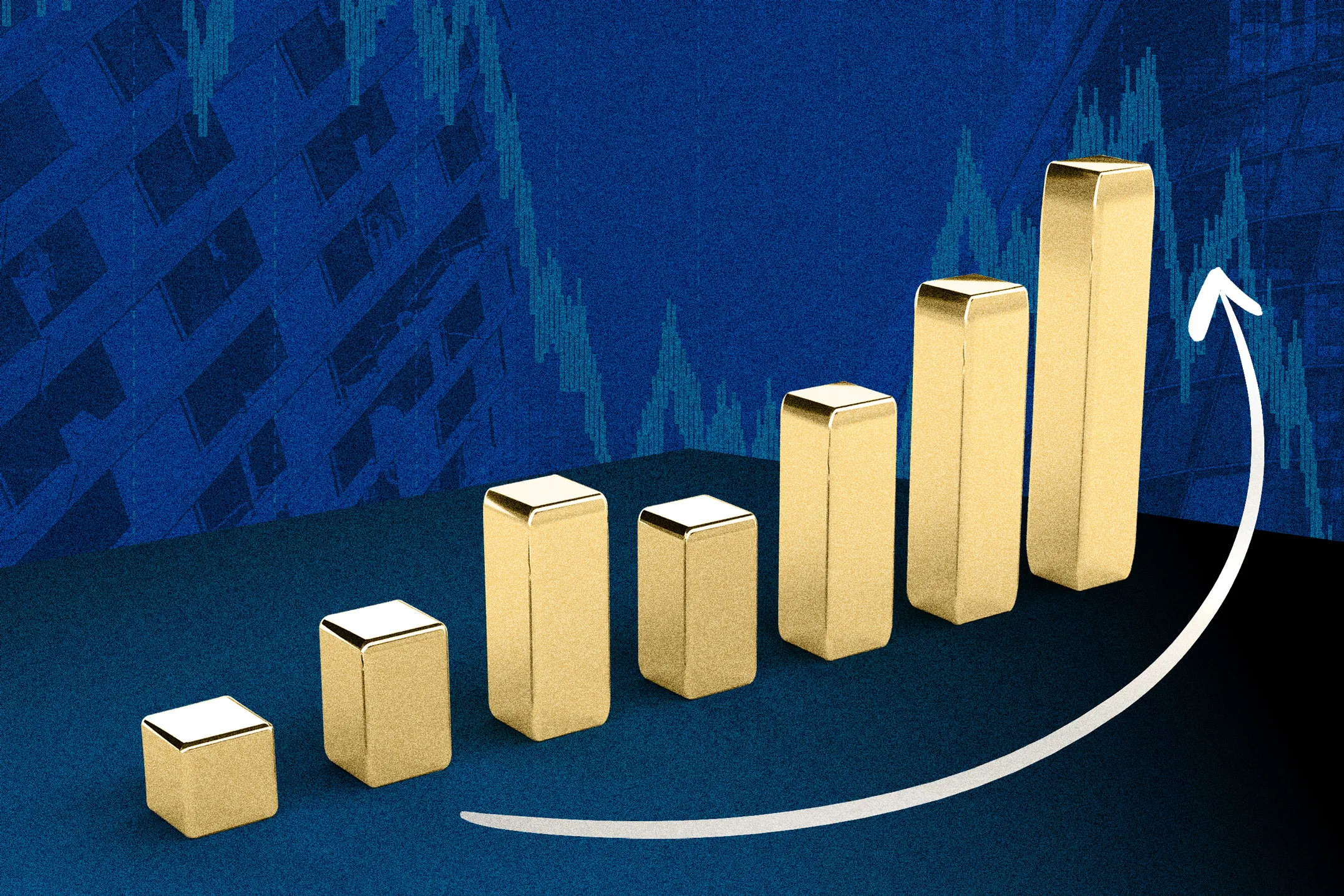 [ad_1]
[ad_1]
The price of gold has surged to an all-time high amid the stock market's ongoing pullback, a disappointing jobs report and rising tensions in the Middle East.
The precious metal set a new record when it hit $2,474 per troy ounce Friday morning on the back of weak employment data, a weeks-long selloff afflicting the major market indices and renewed rhetoric between Israel and Iran. Gold prices have posted a year-to-date gain of 21%, compared to 12% for the S&P 500.
Why gold prices are rising to record highs
According to the U.S. Bureau of Labor Statistics, the unemployment rate hit 4.3% in July, the highest reading since October 2021. Additionally, only 114,000 non-farm jobs were added.
This has fueled speculation about the Federal Reserve's inability to accomplish a soft landing in its quest to lower inflation while keeping the economy strong. But with the likelihood of September interest rate cut at 100%, according to the CME Group's FedWatch Tool, gold prices — which tend to strengthen alongside lower interest rates — have benefited.
At the same time, the S&P 500 and Nasdaq continued their descent despite tech companies reporting strong second-quarter earnings and revenues. The S&P is down -6.02% since July 16, and the tech-heavy Nasdaq Composite has fallen -10.78% since July 10. Meanwhile, gold is up around 6% since July 1.
Precious metals in general and gold in particular often exhibit negative correlations with stocks and other asset classes that experience more price volatility. Generally speaking, when stock prices fall, gold prices tend to rise.
Another factor propelling the price of gold is renewed conflict in the Middle East. On July 27, Israel blamed Iran-backed Hezbollah after a rocket attack in the Golan Heights killed 12 children. Israel retaliated on July 30 with strikes inside Beirut and Tehran, that latter of which killed Hamas leader Ismail Haniyeh. Geopolitical unrest tends to be a positive driver for the price of gold, as it's viewed as a price-stable and a store of value.
Should you invest in gold?
Gold has historically been used to mitigate overall portfolio risk as a safe-haven asset. And while owning the physical metal may not be ideal for retail investors, there are numerous ways to invest in gold and other precious metals.
The most common approaches to doing so are through gold miner stocks and gold exchange-traded funds, which offer alternative exposure to the metal without having to maintain ownership of gold itself.
However, over-allocating to gold is not recommended. The precious metal has underperformed stocks in the long run. Over the past five years, gold has gained 68.67% while the S&P 500 has returned 81%.
It is generally advisable to invest no more than 10% of a portfolio in the alternative asset such as gold. Additionally, when investors buy any asset at or near record highs, short-term losses are not uncommon.
More from Money:
How Much Is an Olympic Gold Medal Worth? Less Than You'd Think
Fool's Gold? Walmart Is Selling Snoopy and Darth Vader Coins for Thousands of Dollars


